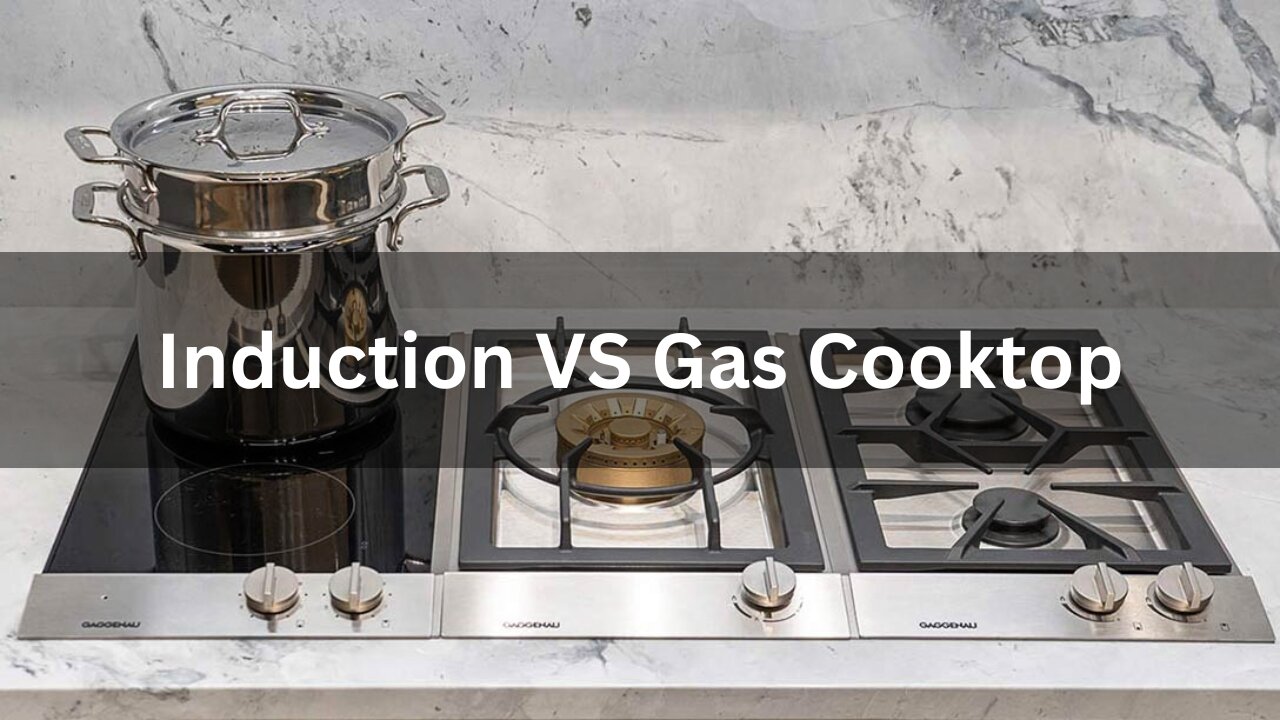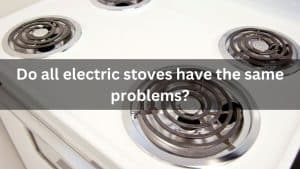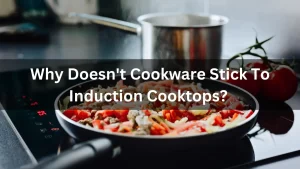In the ever-evolving world of kitchen appliances, the choice between induction cooktop VS gas cooktop has become a pivotal decision for many home cooks. As technology advances and preferences shift, understanding the nuances between these two popular cooking methods is more important than ever.
Whether you’re drawn to the high-tech efficiency of induction or the traditional reliability of gas, each type of cooktop offers unique benefits and considerations. In this comprehensive guide, we’ll delve into the key features, performance differences, and practical aspects of induction and gas cooktops to help you determine which option best suits your cooking style and needs in 2024.
Table of Contents
Induction vs. Gas: What Are the Key Differences?
Here’s a quick comparison of the key differences between induction and gas cooktops to help you make an informed decision:
| Category | Induction Cooktop | Gas Cooktop |
| Technology | Electromagnetic waves heat cookware directly | Open flames heat cookware |
| Cookware Compatibility | Require Magnetic cookware | Compatible with any type of cookware |
| Temperature Control | Precise but residual heat may affect adjustments | Real-time flame adjustment for precise control |
| Appearance | Sleek, modern design with a smooth glass-ceramic surface | Industrial, bulkier appearance with elevated grates |
| Efficiency | More energy-efficient, less heat loss | Less efficient, more heat loss, and kitchen heat |
| Cleaning | Easy to clean with a smooth surface | Require more effort with crevices and removable grates |
| Cost | $1000 to $2500 | $300 to $1500 |
| Durability | Durable but prone to surface scratches | Robust and long-lasting |
How They Work
Induction Cooktop
An induction cooktop works by using electromagnetic fields to generate heat directly within the cookware. When you place a compatible pot or pan (one made of magnetic materials like cast iron or certain stainless steels) on the induction burner, the cooktop’s coils create a magnetic field that induces electric currents in the cookware. These currents generate heat within the cookware itself, which then cooks the food. The cooktop surface remains relatively cool, heating only where the cookware makes contact, allowing for highly efficient and precise temperature control.
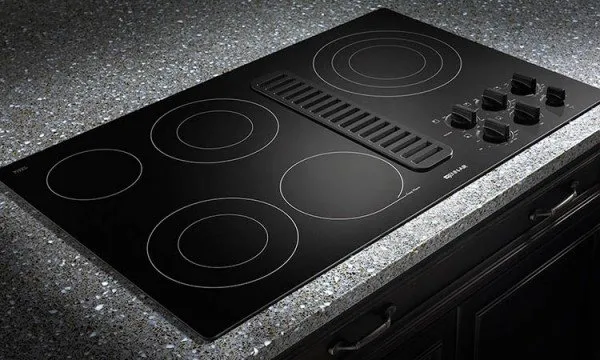
Gas Cooktop
A gas cooktop operates by burning natural gas or propane to produce an open flame. When you turn on a burner, gas flows through a valve to the burner’s head, igniting when mixed with air. This flame directly heats the cookware placed on the burner grates, allowing you to control the heat intensity by adjusting the flame size. The heat is distributed evenly across the bottom of the cookware, making it practical for various cooking techniques.
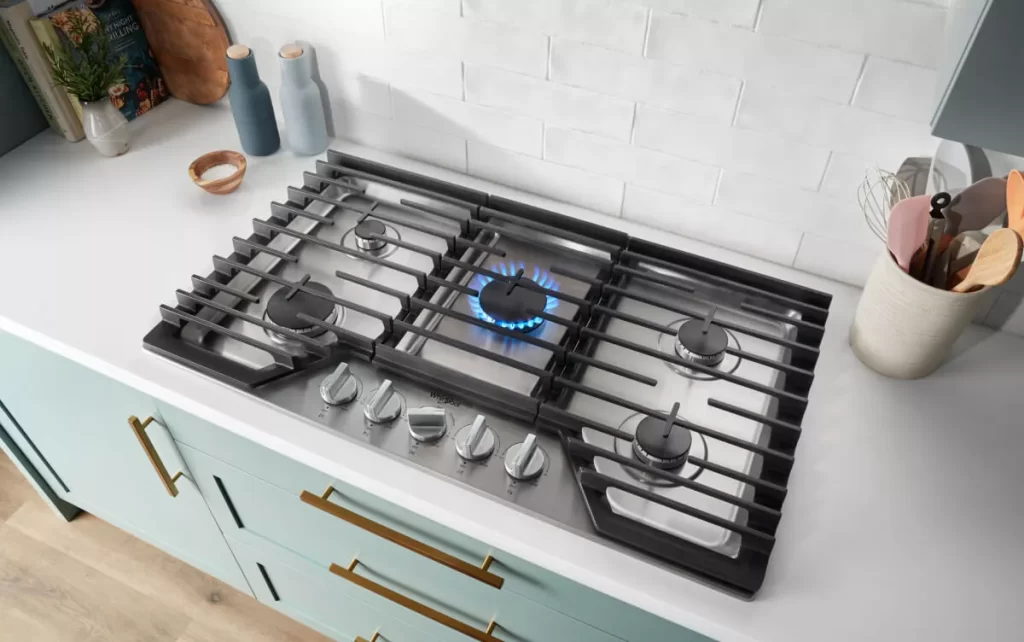
Appearance
Induction Cooktop
Induction cooktops typically feature a sleek, modern design with a smooth glass-ceramic surface. They often resemble traditional glass-top electric cooktops but with subtle differences. Most 30-inch induction cooktops concentrate magnetic heat into four specific spots (or elements) and are usually dark-colored, with defined circles or zones indicating where cookware should be placed.
Gas Cooktop
Gas cooktops have a more industrial and traditional look compared to induction cooktops. They typically feature a metal surface, often stainless steel, with metal grates placed over ceramic burner plates. The pots and pans rest on these grates, allowing them to sit directly over the flame, giving the cooktop a bulkier, more rugged appearance.
Cookware Compatibility
Induction Cooktops
Induction cooktops require cookware made of magnetic materials to function correctly. Compatible cookware includes:
- Cast Iron: Excellent for induction due to its magnetic properties.
- Magnetic Stainless Steel: Must be magnetic; not all stainless steel is compatible.
- Enamel-Coated Cookware: Works if it has a magnetic base.
- Induction-Specific Cookware: Designed with a magnetic layer for compatibility.
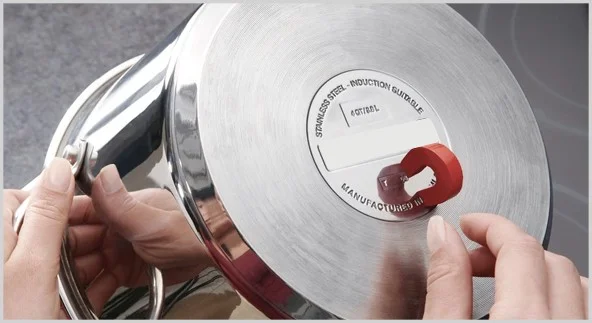
Non-magnetic cookware, such as aluminum, will not work with induction cooktops.
Gas Cooktops
Gas cooktops are compatible with a wide range of cookware. You can use:
- Stainless Steel: Works well with gas burners.
- Cast Iron: Durable and practical for high-heat cooking.
- Aluminum: Suitable as long as it has a flat base for stability.
- Copper: Effective if it has a flat bottom.
- Nonstick: Usable, though it may wear over time.
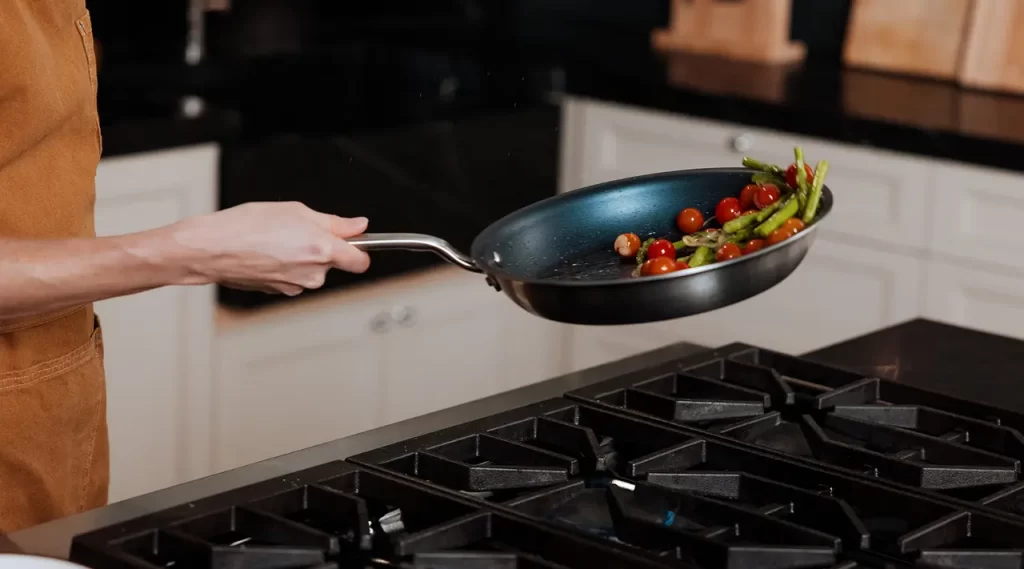
Gas cooktops do not require specific cookware materials, allowing for virtually any type of pot or pan as long as it has a flat, stable base.
Efficiency
When comparing the efficiency of induction and gas cooktops, several key factors come into play, including energy efficiency, cooking performance, and speed.
| Category | Induction Cooktop | Gas Cooktop |
| Energy Efficiency | Highly energy-efficient, with up to 90% of energy transferred directly to the cookware, resulting in minimal heat loss. | Less efficient, with about 40-60% of energy transferred to the cookware, as much heat is lost around the cookware and into the kitchen. |
| Cooking Performance | It heats up quickly and provides precise temperature control, allowing for faster cooking times and more consistent results. | Heats up more slowly compared to induction, with less precise temperature control, which can affect cooking consistency. |
| Speed | Cooks food faster due to direct heating and efficient energy use. | Generally slower due to heat loss and less direct heating of the cookware. |
Cost Comparison
When evaluating the costs associated with induction and gas cooktops, several factors come into play, including initial purchase price, long-term cost efficiency, maintenance, and resale value.
| Category | Induction Cooktop | Gas Cooktop |
| Initial Cost | Generally ranges from $1,000 to $2,500, with higher upfront costs. | Typically, it ranges from $300 to $1,500, with a lower initial investment. |
| Long-term Cost Efficiency | More energy-efficient, potentially reducing energy bills and cooling costs due to less heat emission. | Less energy-efficient, potentially leading to higher energy bills and increased cooling costs. |
| Maintenance and repair cost | Lower maintenance needs; however, repairs can be expensive if the glass surface is damaged. | Regular maintenance is required for grates and burners; repairs are often less costly but more frequent. |
| Resale Value Impact | Increasingly popular, it may enhance resale value in modern kitchens. | Traditionally preferred, it generally maintains a solid resale value, especially in certain regions. |
Durability
When considering the durability of induction versus gas cooktops, it’s essential to examine the resilience of their surfaces and components.
| Category | Induction Cooktop | Gas Cooktop |
| Surface | Durable but prone to scratches and cracks on the glass-ceramic surface. Requires careful handling. | Robust and resistant to wear and tear, with parts like grates and burners being durable but potentially prone to rust over time. |
| Components | Fewer moving parts, which generally means fewer issues and less frequent repairs. | Includes more moving parts, such as knobs and burners, which may need more frequent maintenance or replacement. |
| Overall Lifespan | Typically long-lasting with proper care; however, damage to the glass surface can be costly to repair. | It is long-lasting and durable with proper care, but regular maintenance is required to keep the cooktop in good working condition. |
Cleaning and Maintenance
Induction Cooktop Cleaning and Maintenance
Induction cooktops are relatively easy to clean due to their smooth surface. Spills and splatters can be quickly wiped away with a damp cloth or a specialized cleaner. Regular maintenance involves minimal checks for functionality, but care should be taken to avoid scratches.
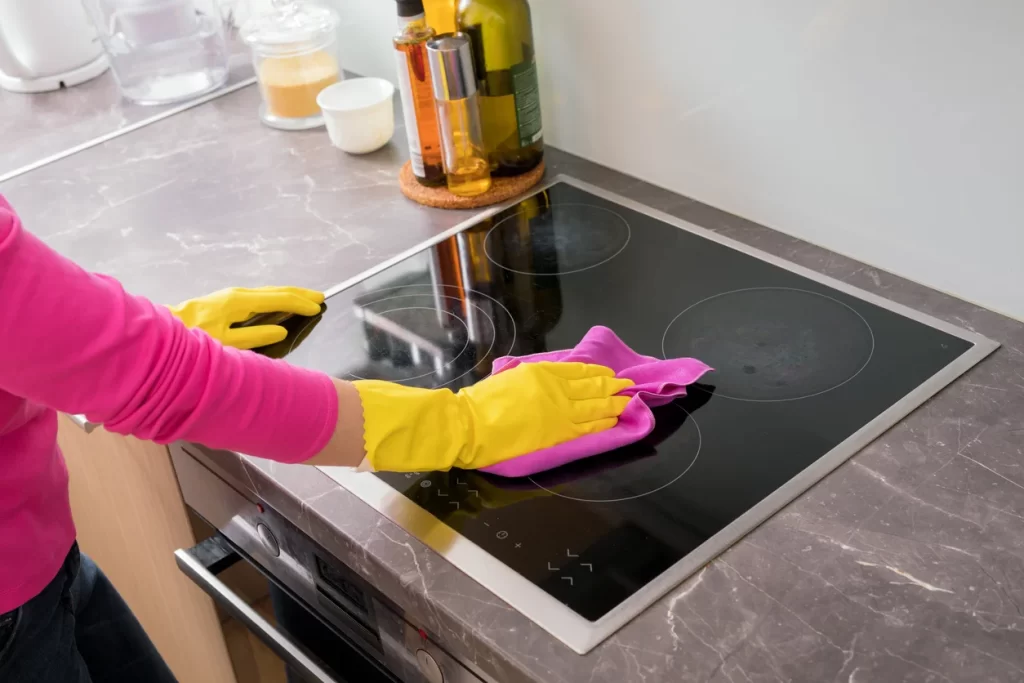
Gas Cooktop Cleaning and Maintenance
Gas cooktops require more effort to clean, involving scrubbing grates and burner heads. Regular inspection and cleaning of these components are necessary. Repairs are generally less expensive but may be needed more frequently due to wear.
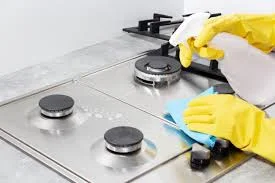
Health and Safety
Health Benefits of Induction Cooking
Induction cooktops offer several health benefits. They produce less ambient heat and minimize the release of fumes, improving indoor air quality compared to gas cooking.
Safety Concerns
- Induction Cooktops: Safer as the surface remains cool, reducing burn risks. Many models feature safety features like automatic shut-off.
- Gas Cooktops: Pose safety concerns due to open flames and gas leaks, requiring proper ventilation and careful handling.
Pros and Cons of Induction Cooktop
| Pros | Cons |
| Energy Efficiency: Up to 90% of energy is directly transferred to the cookware, leading to faster cooking and reduced energy costs. | Cost: Generally more expensive upfront compared to gas cooktops. |
| Precision Cooking: Offers precise temperature control with immediate adjustments for accurate cooking. | Cookware Compatibility: Requires specific magnetic cookware; non-magnetic pots and pans won’t work. |
| Safety: The surface remains relatively cool, reducing burn risks, with safety features like automatic shut-off and pan detection. | Surface Durability: The glass-ceramic surface can be prone to scratches and cracks. |
| Ease of Cleaning: Smooth surface is easy to clean, with spills and splatters wiped away effortlessly. | Learning Curve: It may require time to adjust to different heat controls and cooking methods. |
| Improved Air Quality: Produces less heat and fewer fumes compared to gas cooktops, improving indoor air quality. | Power Requirement: We may need a dedicated 220V power supply, potentially adding installation costs. |
Moreover, if you want to learn more about induction cooktops, you can read this article: Induction Cooktops, How to use and how it works. Latest Info 2024
Pros and Cons of Gas Cooktop
| Pros | Cons |
| Immediate Heat Control: Allows for quick adjustments in flame intensity, providing precise heat control. | Energy Efficiency: Less efficient than induction cooktops, with about 40-60% of energy transferred to the cookware. |
| Versatility: Compatible with a wide range of cookware materials, including non-magnetic pots and pans. | Heat Loss: Significant heat is lost around the cookware, potentially raising kitchen temperatures and cooling costs. |
| Durability: Generally robust and long-lasting with durable metal grates and burners. | Safety Concerns: Open flames and potential gas leaks pose safety risks and require proper ventilation and careful handling. |
| Cost: Lower initial purchase cost compared to induction cooktops. | Cleaning: It is more challenging to clean due to grates and burner components that need regular maintenance. |
| Familiarity: Well-known and widely used, with a familiar cooking experience for many users. | Maintenance: Regular maintenance is required for grates and burners, and repairs can be needed more frequently. |
Moreover, If you want to learn more about Gas Cooktop, you can read this article: Gas Cooktop Read All The Latest Pros And Cons About It 2024
How to Choose
How to Choose Induction Cooktop
When choosing an induction cooktop, consider the size and layout to fit your kitchen and cooking needs. Check the power levels for performance, ensure your cookware is compatible, and look for features like precise controls and easy cleaning. Choose a reputable brand and stay within your budget, keeping in mind potential installation requirements. Also, If you want to learn more about it, you can read this article: Choosing The Right Induction Cooktop For Your Kitchen 2024
How To Choose Gas Cooktop
When choosing a gas cooktop, focus on the size and burner configuration to match your kitchen and cooking style. Check the BTU output for sufficient heat, and select durable materials for longevity. Consider ease of cleaning, user-friendly controls, and additional safety features. Choose a reliable brand and stay within your budget, including installation costs. Additionally, If you want to learn more about it, you can read this article: How To Choose The Right Gas Cooktop For Your Kitchen? 2024
Conclusion
Choosing between an induction cooktop vs gas cooktop depends on your specific cooking needs and kitchen preferences. Induction cooktops offer precise temperature control, high energy efficiency, and a sleek, modern design, but they come with a higher initial cost and require compatible cookware. On the other hand, gas cooktops provide immediate heat control, are compatible with a wide range of cookware, and have a lower initial cost, but they are less energy-efficient. They can pose safety risks with open flames.
Consider factors like cost, efficiency, durability, and cleaning requirements when making your decision. Both types have their advantages and potential drawbacks, so weigh these aspects against your cooking style and kitchen setup to choose the cooktop that best fits your needs.
FAQs
Can I use all types of cookware on an induction cooktop?
No, you need magnetic-based cookware, such as cast iron or stainless steel. You can test if your cookware is compatible by seeing if a magnet sticks to the bottom.
Which cooktop is better for professional cooking?
It depends on the chef. Many professionals prefer gas for its visual control, while others are switching to induction for its precision.
Are gas stoves more dangerous than induction cooktops?
Yes, gas stoves carry more risks due to open flames and potential gas leaks. Induction is safer because the cooktop itself doesn’t get hot.
Is an induction cooktop worth the investment?
If you prioritize energy efficiency, safety, and fast heating, then yes, induction cooktops are worth the investment.

